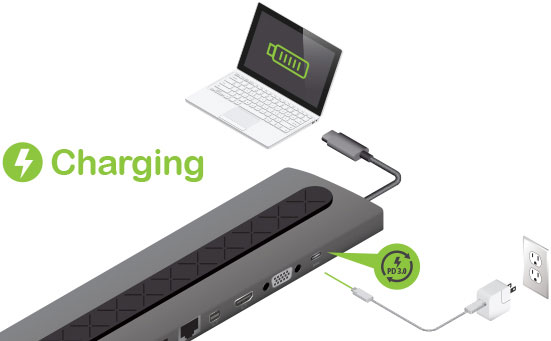USB Power Delivery
Posted on February 9, 2020 by KVMGalore | 0 comments
 USB Power Delivery (or PD, for short) is a single charging standard for handling power, allowing a range of devices to charge quickly over a USB connection.
USB Power Delivery (or PD, for short) is a single charging standard for handling power, allowing a range of devices to charge quickly over a USB connection.
Normally, each device charged by USB has its own separate adapter, but not anymore. One universal USB PD is able to power a wide variety of different devices.
USB Power Delivery operates by facilitating a conversation between two devices to negotiate a power contract so they can determine how much power can be pulled from the charger.
Power Delivery starts at the 5V setting and is configurable up to 20V. Using a standard USB-C cable, USB Power Delivery has increased standard power levels to up to 100W. This means your device will be able to charge much faster than before.
Another point of interest regarding Power Delivery is that it allows for power to flow both ways, with no set direction based on circuit or connection. For example, in the past, if you plugged your phone into the computer, it would charge your phone. But with Power Delivery, the phone you plug in could be responsible for powering your hard drive.
Power Delivery also ensures devices are not overcharged, providing only the necessary amount of juice needed. While most smart phones aren't able to take advantage of the added power, many other devices and computers are able to.
As our phones and devices continue to use up more and more power, USB Power Delivery is likely to become more and more common. Even power banks now have USB PD to charge or operate devices that demand a lot of power (think MacBooks, Switches, GoPros, drones and more). With Power Delivery, a range of devices can share their charges with one another and power each other without hassle. Power Delivery is simply a much easier and streamlined way to go about charging all of your devices.





